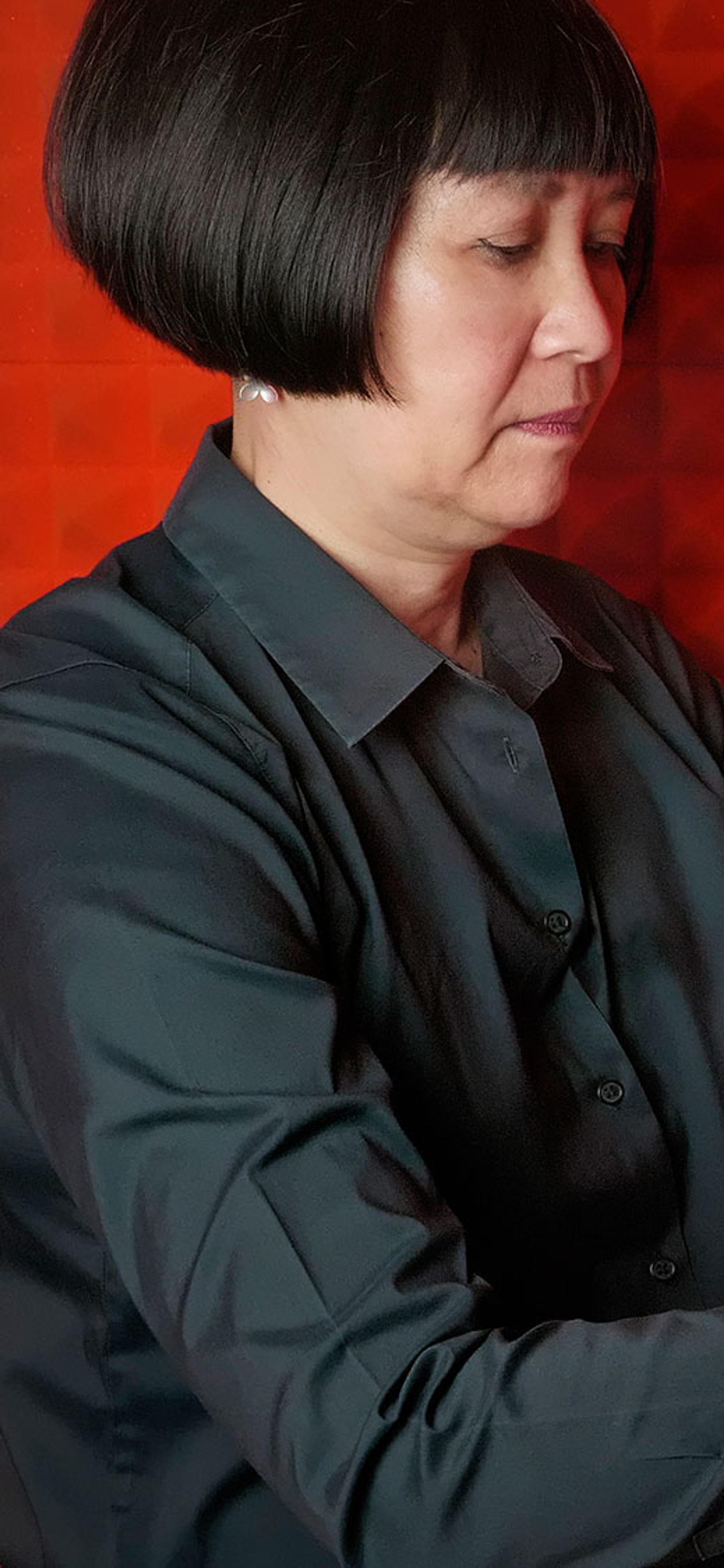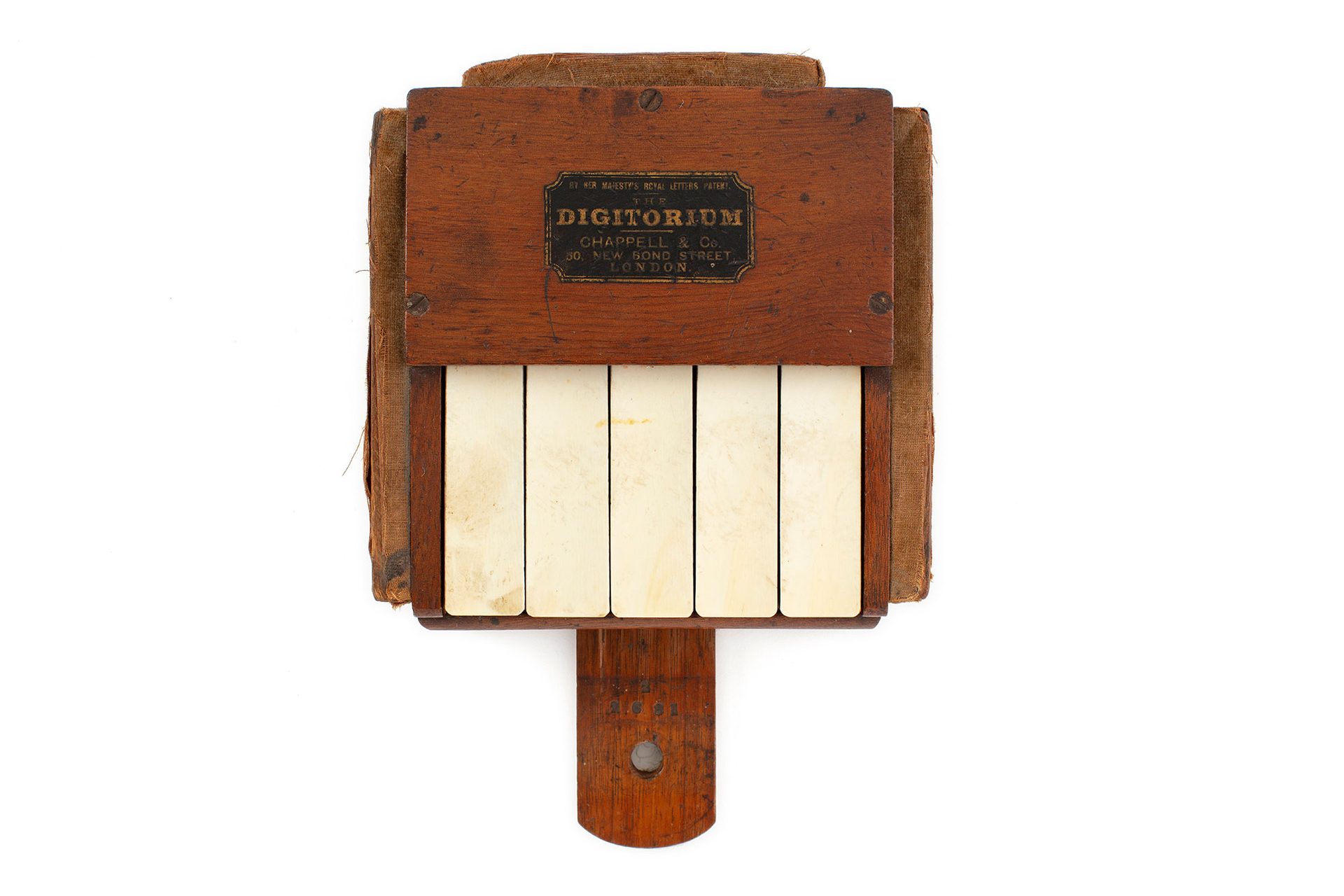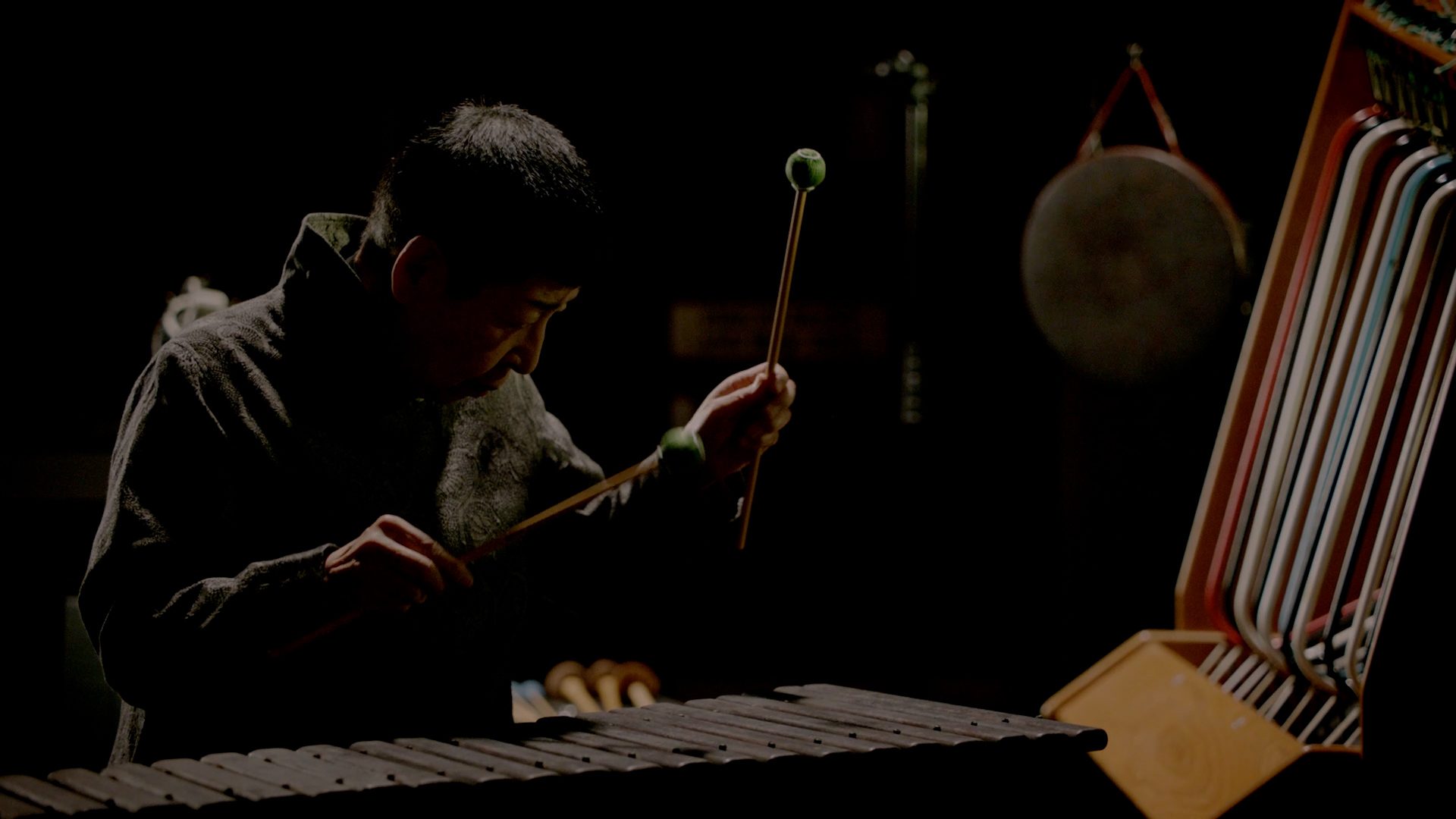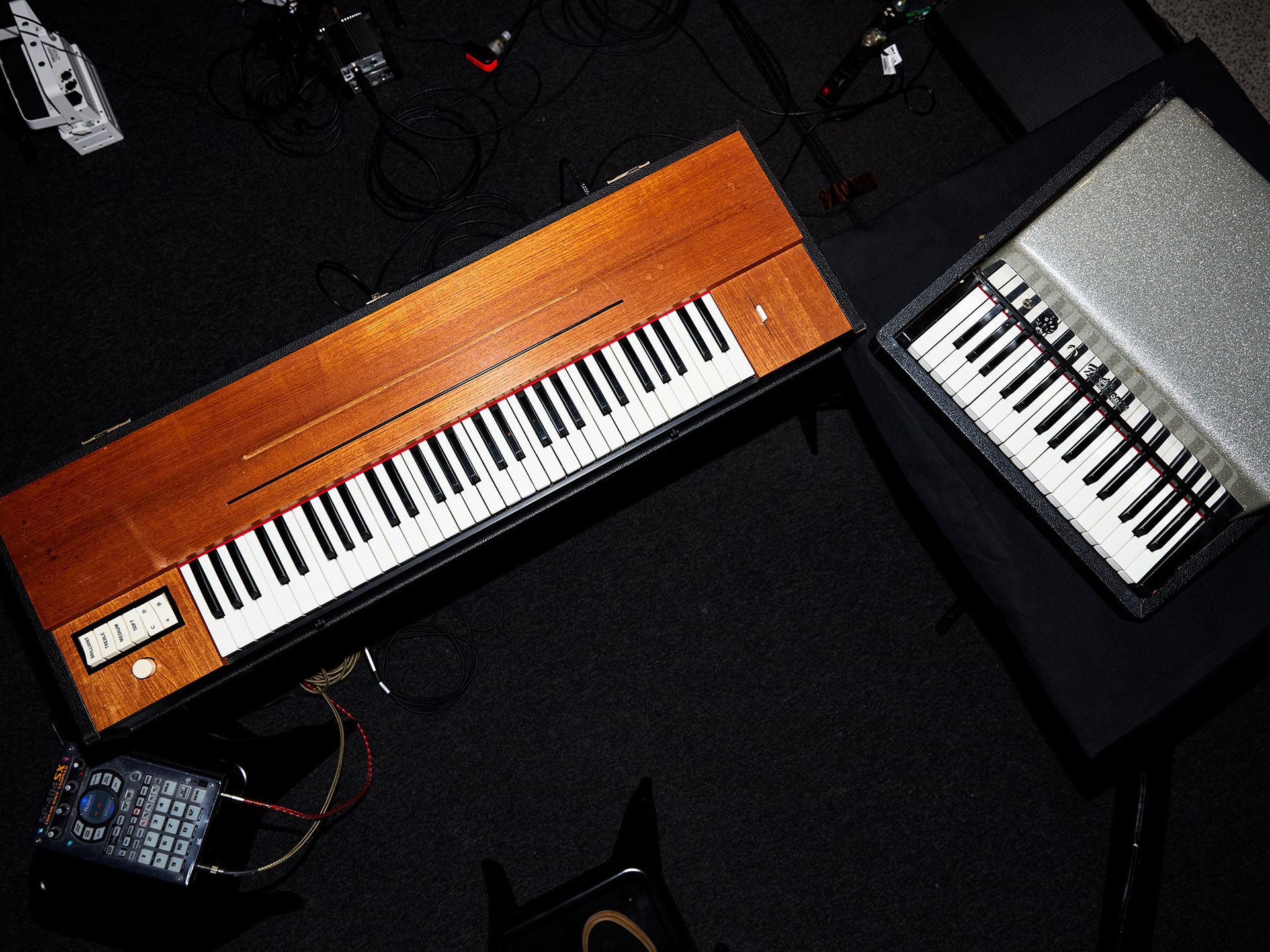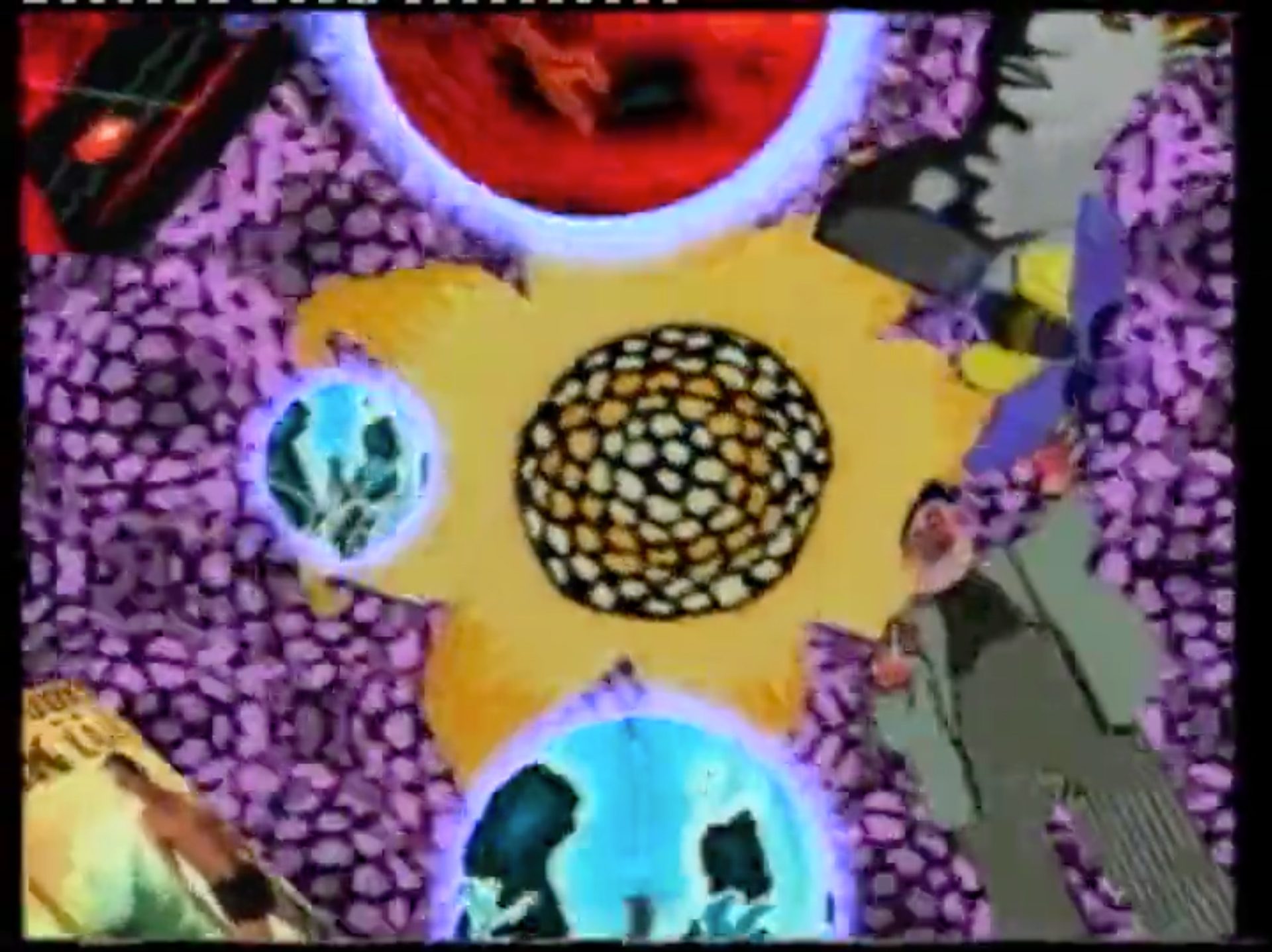Sound Before Sound II: Auditioning the Archive

Research Project
Deep within the collection stores in Castle Hill is a glowing sound booth, a site of investigation. Sound Before Sound II: Auditioning the Archive is the work of researchers and artists Sonia Leber and David Chesworth, made in residence at Powerhouse Castle Hill in 2022. Capturing the attempts, strategies and care undertaken by museum staff in activating and recording objects otherwise mute, their work follows sound-making devices such as tuning forks, music boxes, scales, calculators and pencil sharpeners performing once again.
Conservators stroke, prod and push levers, while sound recordists adjust an array of microphones to capture sounds as part of Sounding the Collection – an initiative by Powerhouse to bring objects from the collection into audition and invert the visual hegemony of its online collection. Intrigued by this process and building on their previous investigations into the nature of sound, archives and listening, Leber and Chesworth take inspiration from experimental German artist Werner Nekes' encyclopedic survey of the prehistory of cinema to document the reanimation of objects.
The following quotes from Leber and Chesworth come from an interview conducted for Powerhouse Lates.

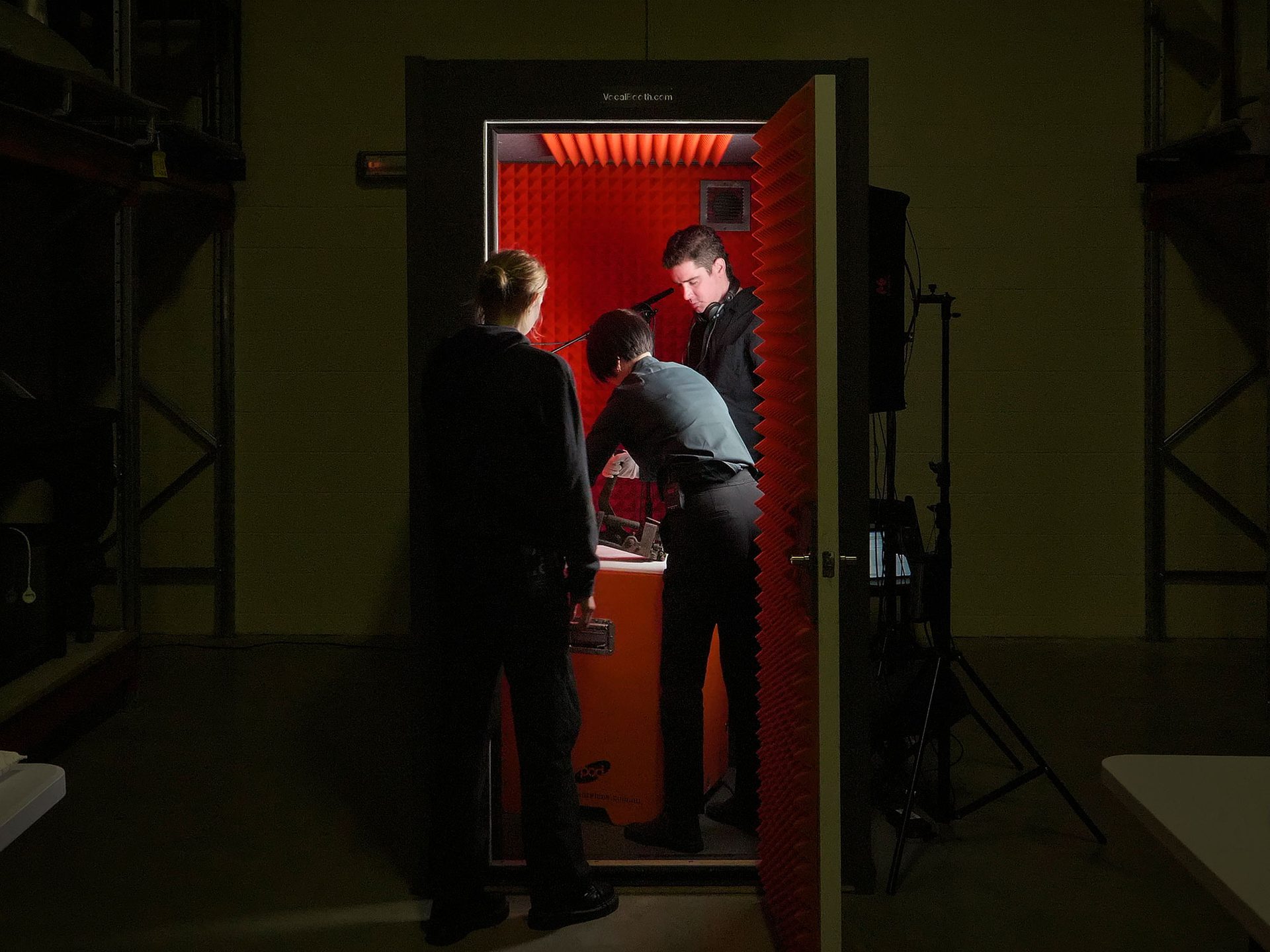
SL As soon as we arrived, we encountered this orange booth and the booth frames a site of investigation for us. David and I don't hold ourselves to being strictly realistic. We like to provoke ourselves to be open and expressive in different ways.
I remember a film that I saw a long time ago called Film Before Film. It's made by the German artist Werner Nekes and he had access to an extraordinary collection of pre-cinema objects like zoetropes, spinning disks, and magic lantern slides. What he did in the film was, without any kind of narrative, without any history, he just activates the objects. He brings them to life one after another, after another. So this is how we get our title Sound Before Sound.
‘We witnessed the care and ingenuity as staff grappled with the task of recording an object, deciphering its sources of sound, and reimagining its intended purpose. Activating these objects forged unexpected connections. There’s a device called the Digitorium from 100 years ago, which is for keyboard players to strengthen their fingers. It doesn't do much else. But then next to that is a shot of a Rubik's Cube and someone manipulating it with their fingers. All of a sudden correspondences between disparate objects emerged through their human manipulation. You then understand more about one object through the other.’
‘To have the liveness and intimacy that sound brings to an archive is really interesting.’
SL There's also a certain awkwardness to handling a complex mechanical object, because many of these objects were once expertly manipulated by skilled operators in their real world context.
DC As we try and give a voice back to these inanimate objects that sit silently, statically, you add temporality back into the object. It exists again in time. Sound archives are interesting when you think that there's a potential loss because, without sound, there's something missing from an archive. The sonic archive is striving to find that overlooked or missing dimension.
DC When we’re filming we are always experimenting with sound as much as vision. Sound surrounds us and it can provoke different interpretations and translations of our surrounding world. It’s also a psychological thing.
How does one experience sound archives? Because they are time dependent, often people dip in and out or they might listen to a short fragment. We've lost our contact with sensing temporality because we get nervous when we have to listen for too long.
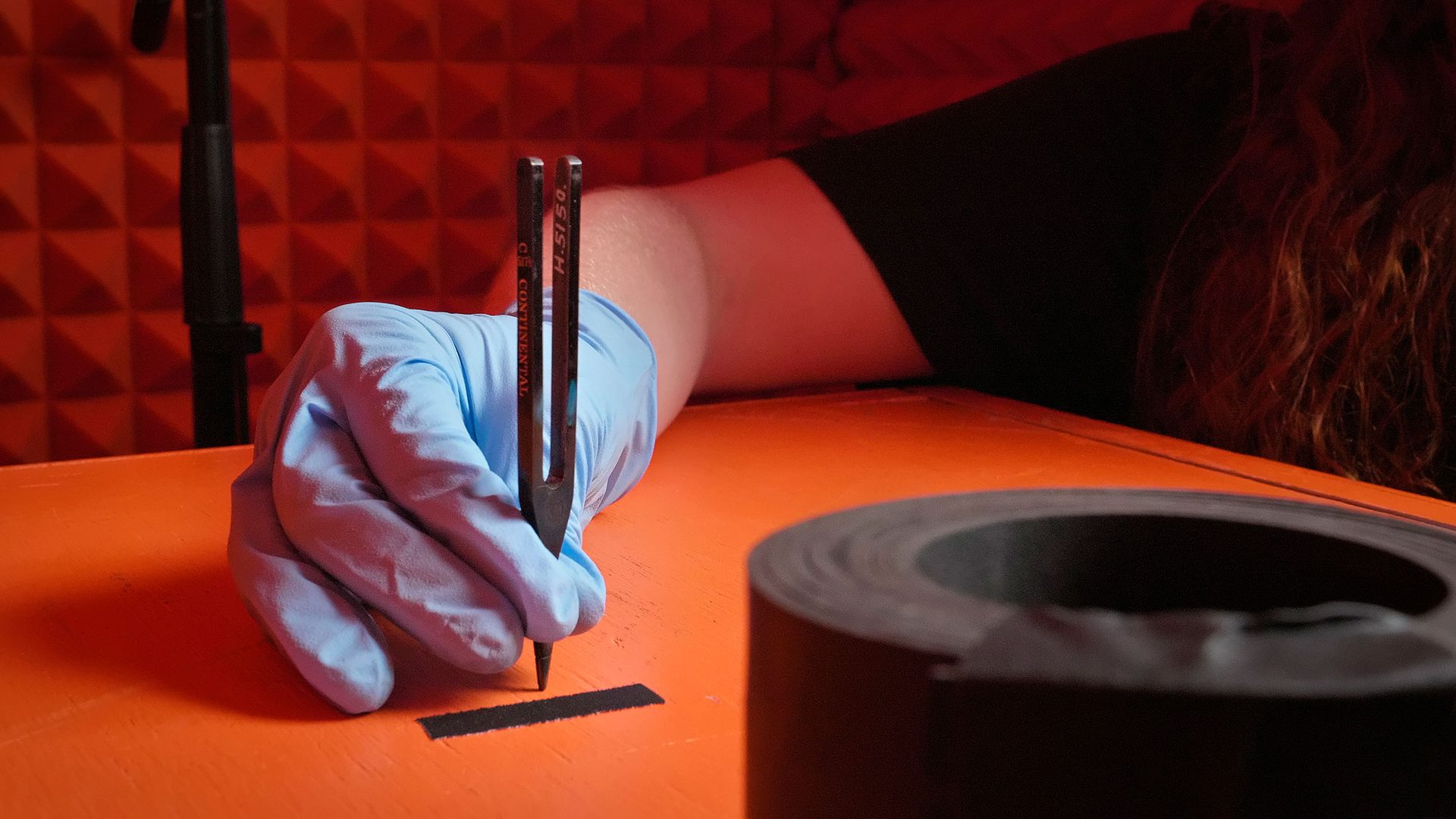
‘How do you go about sounding the objects? You might not know the history of the objects or how they worked in their original contexts. The staff made various attempts to activate them. We’d often learn about the materiality of the object through listening to the moving parts. We'd hear those repetitions that might be embedded in the mechanism. It is through these diverse auditory investigations that we delve deeper into understanding the objects.’
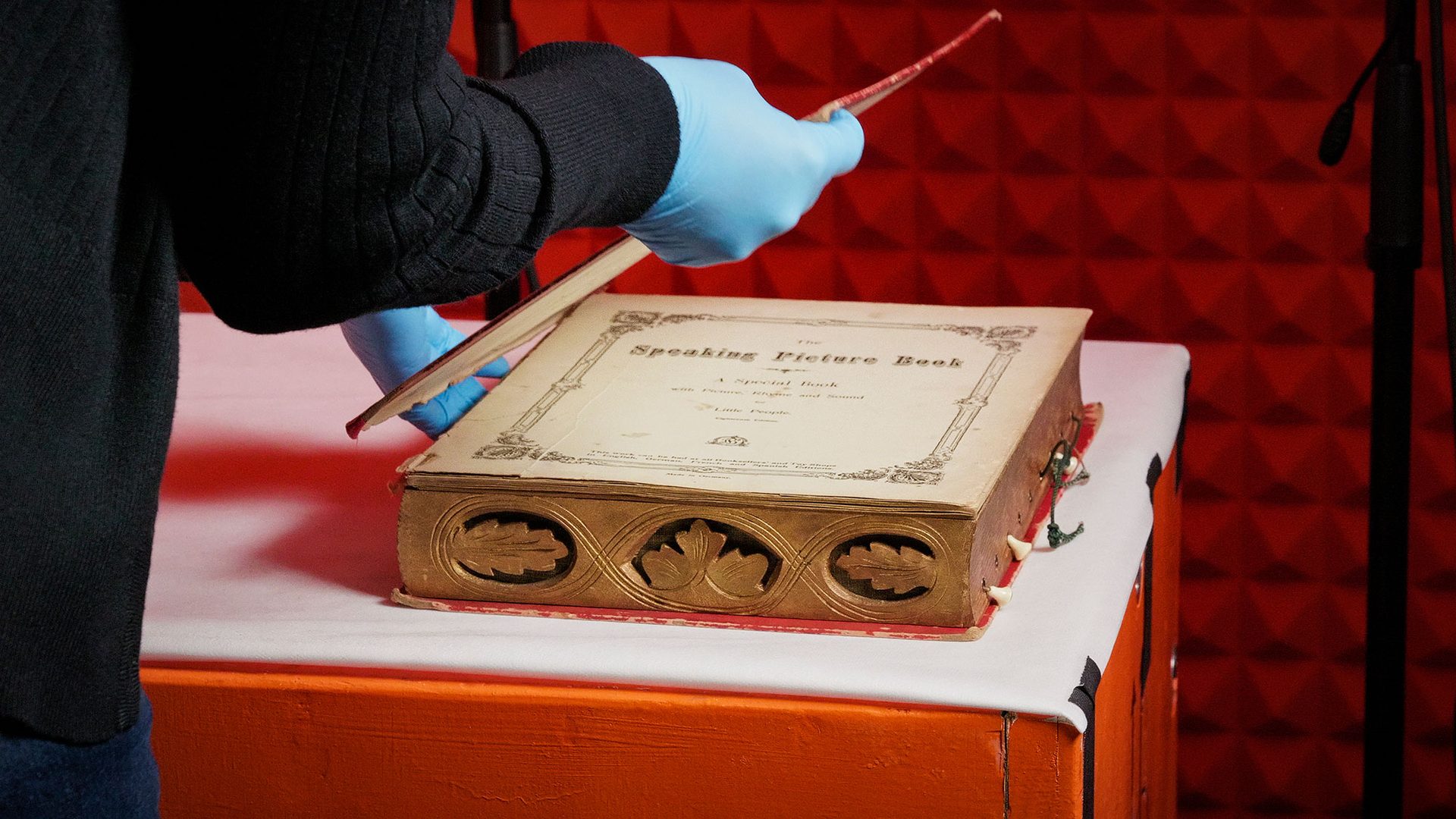
SL Auditioning the Archive is typically shown in pristine art galleries with white walls. The frame of the video is like a portal into a series of activities where people are obsessive about extracting sound. The sound booth is a further frame that draws you even closer to the objects.
Research Scholars
Sonia Leber and David Chesworth are known for their distinctive video, sound and architecture-based installations that are audible as much as visible. Leber and Chesworth’s works are speculative and archaeological, often involving communities and elaborated from research in places undergoing social, technological or local geological transformation. Their works emerge from the real but exist significantly in the realm of the imaginary, hinting at unseen forces and non-human perspectives.
Leber and Chesworth’s artworks have been shown in the central exhibitions of the 56th Venice Biennale (2015) and the 19th Biennale of Sydney (2014). Solo exhibitions include Where Lakes Once Had Water, TarraWarra Museum of Art, Healesville, Australia (2022) and Drill Hall Gallery, Canberra (2022); What Listening Knows, Messums Wiltshire, UK (2021); and Architecture Makes Us: Cinematic Visions of Sonia Leber & David Chesworth, Centre for Contemporary Photography, Melbourne (2018) touring to UNSW Galleries, Sydney (2019) and Griffith University Art Museum, Brisbane (2019). Leber and Chesworth are honorary fellows in the School of Art at RMIT University, Melbourne. The artists live and work in Naarm/Melbourne, Australia.
CREDITS
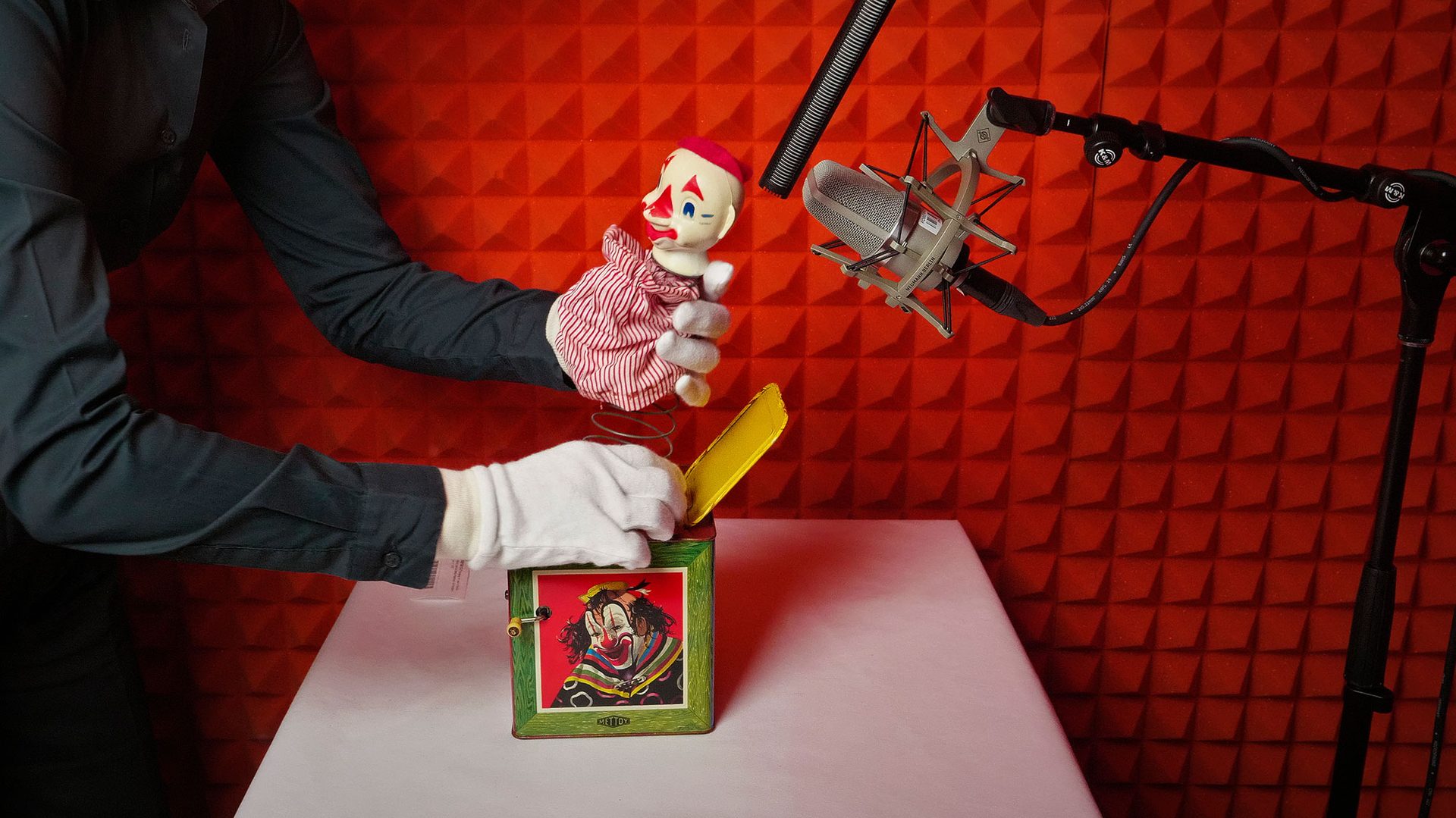
Exhibited at Where Lakes Once Had Water, Sonia Leber and David Chesworth, TarraWarra Museum of Art, Healesville, Australia, 2022. Filming, editing and sound design by Sonia Leber and David Chesworth.
Colour grading by Peter Hatzipavlis
The artists acknowledge the support of the Powerhouse Research, Digital, Conservation and Registration teams. Sound recording by Mara Schwerdtfeger, Cara Stewart and Sam Vine. Special thanks to Suzanne Chee, Kate Chidlow, Emma Druett, Vanessa Pitt, Deborah Lawler-Dormer, and Matthew Connell.
Supported by the School of Art at RMIT University and TarraWarra Museum of Art.
Sounding the Collection
From an automaton bird cage and an art deco clock to toy robots, tuning forks and steam engines, Sounding the Collection is a sonic archive from Powerhouse that brings objects sitting silent in the collection to audition. The archive hosts more than 100 recordings designed to be shared publicly, inviting artistic interpretation and collaboration. These recordings allow musicians, researchers and sound designers globally to repurpose and interpret them via a ‘sample pack’ — potentially finding their way into sonic identities, movie soundtracks, foley, pop songs and sound installations.
Powerhouse is working to fold sonic archives and sonic interpretation of the Collection’s material culture. In addition to Sounding the Collection, the museum is host to a range of projects that activate and listen closely to its objects. This includes the Oscillations podcast series, collaborations with Research Fellows and performances with collection instruments.
Powerhouse Collection
Powerhouse is custodian to more than half a million objects of national and international significance and is considered one of the finest and most diverse collections in Australia.
Research Scholars
Powerhouse Museum operates an annual program to support research of the collection, museum practice, learning and public outcomes.










